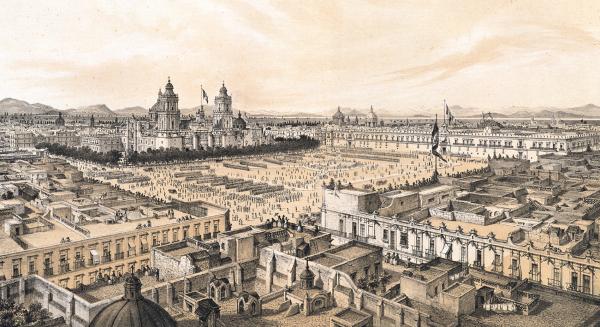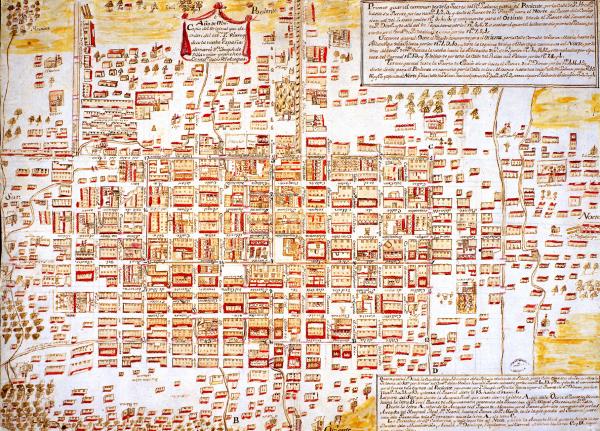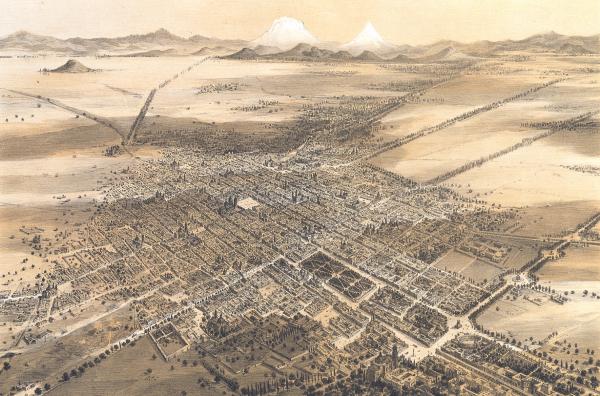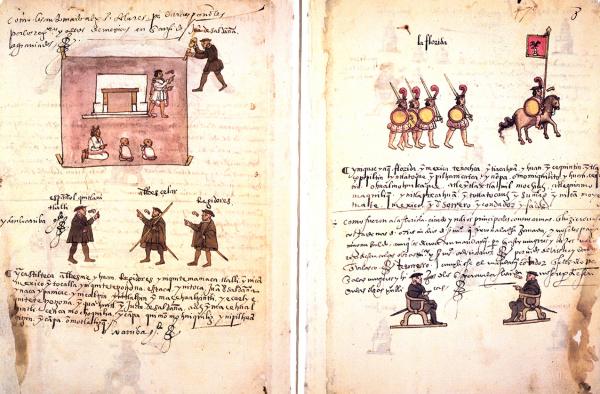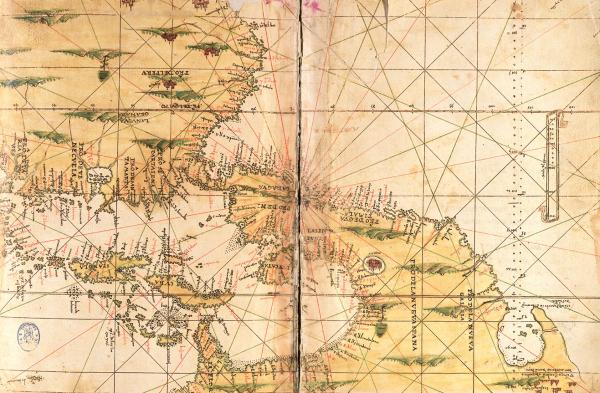| Plan of the city of Mexico, divided into districts. 1782. Manuel Villavicencio. AGI. During the 18th century, demarcations between neighbourhoods were determined for purely administrative purposes. The physical division made between one neighbourhood and another was generally performed on the basis of "districts". | 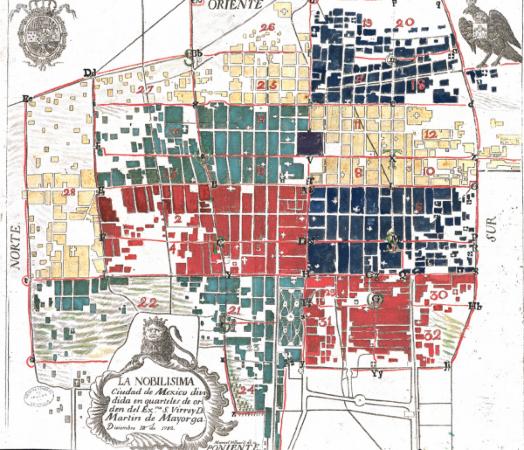 |
